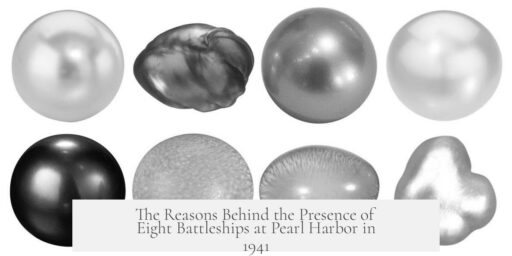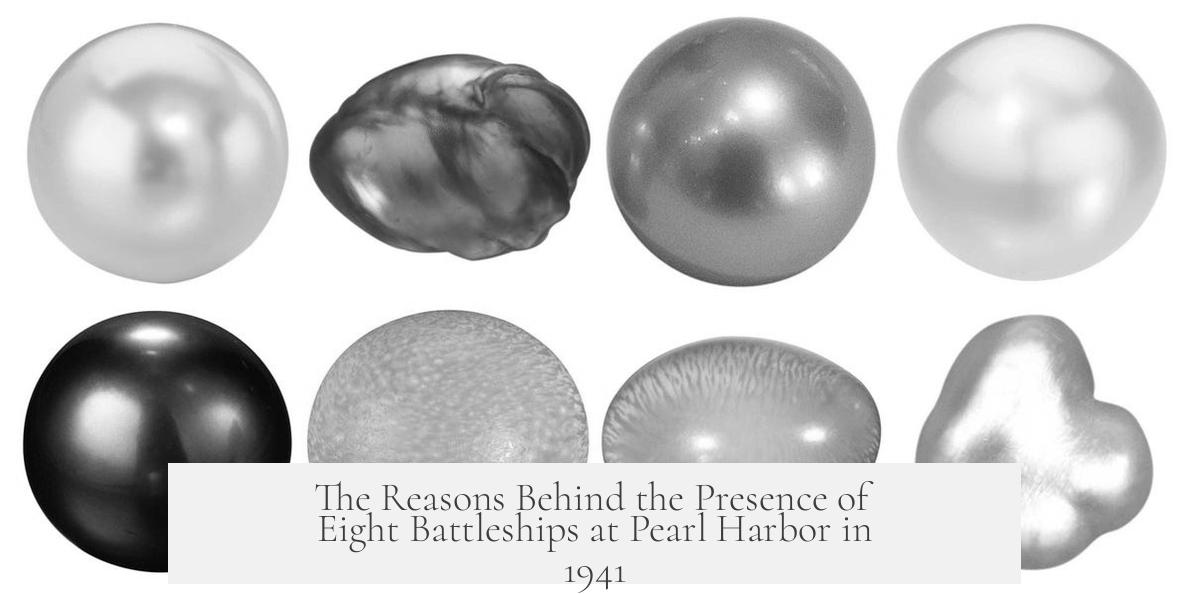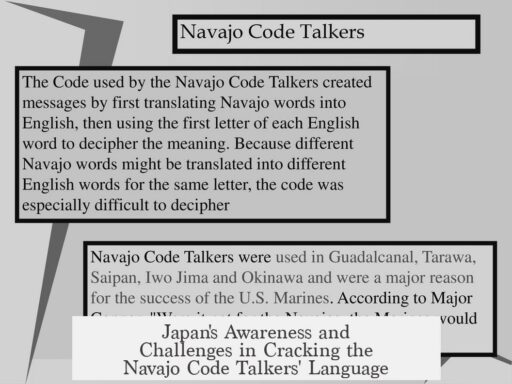The United States had 8 battleships at Pearl Harbor in 1941 primarily to project naval power in the Pacific, deter Japanese aggression, and position the fleet strategically between key U.S. territories and potential conflict zones. These battleships formed the core of the Pacific Fleet, supporting U.S. interests amid rising tensions. Their deployment reflected America’s shifting stance toward global conflict as well as logistical and strategic needs.
Pearl Harbor’s location was vital. Positioned centrally in the Pacific, it allowed rapid access to the Philippines and the Panama Canal. This centrality enabled the fleet to respond swiftly to threats or support allies across vast ocean distances. Placing battleships there served as a clear signal to Japan that the U.S. would defend its Pacific holdings and challenge Japanese expansion.
By 1941, U.S. isolationism had been eroding. President Franklin D. Roosevelt instituted trade sanctions against Japan, aiming to curb its military actions in East Asia. In response, the Navy expanded, adding modern warships to match Japan’s buildup. The transfer of the Pacific Fleet to Pearl Harbor in 1940 was a strategic move to warn Japan and be closer to potential hotspots.
Though the fleet was large, many battleships at Pearl Harbor were not state-of-the-art. The latest, USS West Virginia, was 18 years old; others approached 30 years in age. Treaty restrictions from the Washington Naval Treaty limited new battleship construction, so the Navy kept these older ships active, updating them through refits. Newer classes such as the South Dakota and Iowa were being developed to replace them.
On December 7, 1941, all eight battleships were in port due to several reasons:

- Peacetime cost-saving practices kept many ships docked rather than at sea.
- Normal fleet rotation meant half would typically be on exercises or patrol.
- Carrier groups, commanded by Admiral Halsey, were away reinforcing Wake Island, leaving battleships behind.
- The U.S. was at peace, and sailors were often on weekend leave.
- Military leadership did not anticipate an imminent attack or credible warning signs.
Several misconceptions shaped the U.S. Navy’s position. There was an underestimation of Japan partly due to racial biases. The battleship was still considered the dominant naval asset, and many believed aircraft could not decisively harm them. Furthermore, the Navy believed surprise attacks violated wartime conventions, making the idea of a Japanese strike unlikely.
Japan’s goal was a swift, surprise knockout to disable the U.S. Pacific Fleet and secure uncontested control of Southeast Asia. They aimed to sustain their gains before the U.S. could rebuild. This strategy relied on temporarily outpacing American industrial capacity and naval recovery.

The U.S. Navy’s strength since the late 19th century supported American global interests. The fleet was a tool to maintain power not only in the Western Hemisphere but internationally. Stationing eight battleships at Pearl Harbor reflected the broader policy of maritime dominance and readiness in a growing global conflict.
| Factor | Explanation |
|---|---|
| Strategic Location | Pearl Harbor’s central position in the Pacific, close to the Philippines and Panama Canal |
| Deterrence | Battleships projected power to warn Japan against aggression |
| Naval Expansion | U.S. Navy buildup starting in late 1930s in response to Japanese actions |
| Fleet Readiness | Ships formed the Pacific Fleet core; part of peacetime rotation and exercises |
| Misjudgment | Underestimation of air threat and surprise attack likelihood |
- Pearl Harbor housed 8 battleships to ensure quick U.S. naval response in the Pacific.
- The fleet’s presence projected deterrence against Japanese expansionist ambitions.
- Ships were aging but still formed the backbone of the Pacific Fleet due to treaty limits.
- Peacetime norms and operations left battleships in port on December 7, 1941.
- Misconceptions about Japan’s capabilities and military tactics influenced U.S. preparedness.
Why Did We Have 8 Battleships at Pearl Harbor in 1941, in the First Place?
The simple answer: Those eight battleships were the heart of the U.S. Pacific Fleet, positioned at Pearl Harbor as a strategic show of force and a warning to Japan — a power projection halfway across the Pacific. They weren’t just parked there for a Sunday nap. This deployment reflected complex military, political, and geographical calculations.
Let’s peel back the layers of why these heavy hitters were nestled in Hawaii at the dawn of World War II, and why all eight happened to be in port on that infamous day: December 7, 1941.
Strategic Chessboard: Placing Battleships Closer to Japan
Back in the late 1930s and early 1940s, Japan’s expansionist moves across East Asia worried American military planners. The U.S. Navy’s response was to reposition the Pacific Fleet from California’s West Coast to the then-remote Hawaiian Islands, specifically Pearl Harbor. Why? It was about putting muscle within striking range — closer to Japan and its sweeping Pacific holdings.
Think about it: Hawaii lies roughly in the middle between key U.S. Pacific outposts like the Philippines and the strategic Panama Canal. In practical terms, this central spot meant the battleships could respond more quickly—not just to Japan’s moves, but to broader events threatening U.S. interests. The fleet wasn’t just an isolated group of ships. It was a flexible force, poised to deter aggression or step in if war broke out.
This deployment was also a direct message. Stationing eight battleships there was a clear warning to Japan — America wasn’t going to sit quietly while its interests were threatened across the ocean. The Pacific Fleet’s presence projected U.S. power in the region, which helped maintain a tense peace — at least temporarily.
The Winds of Change: Waning U.S. Isolationism and Fleet Buildup
In 1941, America was still officially “neutral,” but isolationism was losing steam fast. The country watched as fascism and militarism swept across Europe and Asia. Support for allies like Britain began growing, and President Franklin D. Roosevelt responded with trade sanctions against Japan, tightening the screws from 1940 onward.
The U.S. Navy was on a discreet but steady buildup, responding to Japan’s military expansions and the raging Sino-Japanese War just to the west. After 1936, shipbuilding accelerated; Congress, mindful of the looming threat yet bound by treaties and the Great Depression, allowed the Navy to grow and modernize. The 1940 decision to nearly double the fleet and move the Pacific Fleet to Hawaii was a key part of this shift.
Why Were All Eight Battleships in Port on December 7, 1941?
This is often misunderstood. It wasn’t bad luck or gross negligence that put all these massive war machines in Pearl Harbor harbor together, making an easy target.
In peacetime, keeping ships sailing constantly is expensive. Maintaining a large fleet at sea 24/7 drains fuel, crew endurance, and resources. So, a practice developed where roughly half of the fleet stayed in a safe, defensible port like Pearl Harbor, while the other half conducted patrols or exercises nearby.
On the weekend of the attack, the faster aircraft carriers had gone to reinforce Wake Island under Admiral Halsey. Battleships, slower and less suited for rapid movements, stayed behind to maintain a defensive posture. This ordinarily would have meant about half the ships in port at any time, but because of the carriers heading out and other operational rotations, all eight were there simultaneously.
Add to that the fact that Sunday, December 7, was a day of rest and relative peace. Sailors enjoyed weekend leave, and no credible warnings anticipated a surprise Japanese attack.
A Fleet Frozen in Time: The Battleships’ Condition in 1941
Let’s clear the air — those eight battleships weren’t the latest and greatest war machines you might picture. The USS West Virginia, the newest, was 18 years old. The USS Pennsylvania and USS Arizona were pushing 30 years on the clock. Naval technology moves fast, and battleship designs were evolving rapidly through the 1930s.
International naval treaties, like the Washington Naval Treaty, regulated battleship size and numbers, forcing navies worldwide to keep aging vessels rather than continually build new ones. These immutable rules froze the fleet’s composition, leaving older battleships in service longer than ideal.
Though the ships had undergone overhauls and upgrades, many were overdue for major refits. The Great Depression strangled funding, and dry dock space was rationed, prioritizing newer ships. The older battleships were nearing the end of their operational lives but remained central to fleet strategy.
The Navy was simultaneously building newer classes — the South Dakota and Iowa battleships — designed to surpass their older sisters when ready.
The Mistakes and Misconceptions Leading to the Surprise Attack
Several flawed assumptions blinded the Navy and the nation. A streak of racism flavored many military assessments with the false belief that the Japanese were somehow incapable of executing a complex, daring strike like Pearl Harbor.
There was also a deep-rooted faith that battleships were the undisputed “kings” of naval warfare — too big and armored to be taken down by mere airplanes. Aircraft carriers were still a relatively new concept, and many in the Navy underestimated air power’s potential.
Finally, the culture of the time regarded a surprise attack as “unsportsmanlike.” Naval tradition and pride expected wars to be declared openly before battle, so no one seriously prepared for a sneak strike at an unsuspecting fleet in port.
Japan’s plan hinged on exploiting just these miscalculations. They sought a swift knockout blow to keep the U.S. Pacific Fleet paralyzed, buying Japan precious time to consolidate control over Southeast Asia and fortify their gains. They understood they couldn’t match the U.S. in the long run, but if they could kick off the war by disabling or severely damaging the Pacific Fleet, then they might stall American intervention for years.
America’s Naval Legacy and the Role of Those Battleships
The United States had developed a robust Navy since the late 1800s, with steady upgrades through cruiser and battleship classes. This fleet protected U.S. interests worldwide, projecting power well beyond continental shores.
The eight battleships at Pearl Harbor represented not just military might but American resolve. They were a symbol, a balancing weight in the vast Pacific chess game. Whether old or new, these ships embodied decades of naval tradition, engineering, and strategic thought.
Lessons Behind the Battle Lineup
Why did America keep those battleships together at Pearl Harbor? Geography, strategy, politics, economics, and culture all played a role. It was about deterrence, balancing power, and logistical sense—until the unexpected shook everything up.
What can we learn from this?
- Positioning Counts: Strategic deployments have ripple effects far beyond the immediate threat. Pearl Harbor’s location was brilliant—until it became the enemy’s target.
- Assumptions Can Kill: Underestimating adversaries or the power of new technology can lead to disaster. Battleships may have been kings before, but aircraft carriers were about to wear the crown.
- Keep Your Eyes Open: Traditional ideas about “fair” warfare should never blind us to real threats—especially when peace is fragile.
In the end, those eight battleships stood where they did to guard what America held dear. They were weapons and warnings, monuments and machines, sitting at the pivot point of a looming global conflict.




